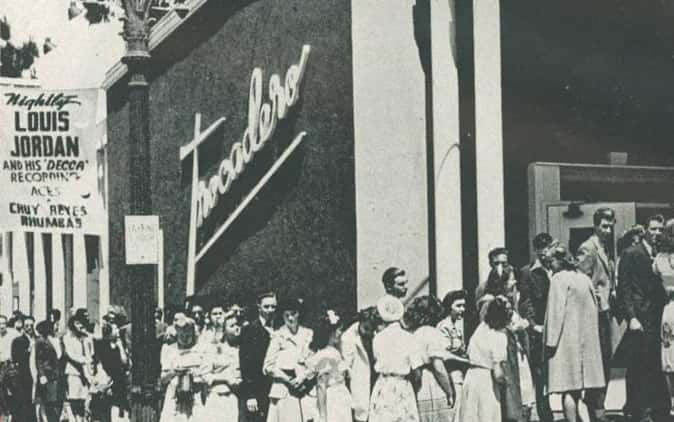Hollywood started as a sleepy, rural town 10 miles from Los Angeles. It had a post office and a hotel…and not much else. You couldn’t even buy a drink; the town voted to ban the sale of alcohol in 1904. If you wanted any excitement, you had to hope the one streetcar into LA decided to show up that day. Even if it did, it was a plodding, two-hour journey.
Then the movies came.
Tinsel Town
Around the turn of the century, Thomas Edison’s Motion Picture Patents Company owned just about every patent involved in making movies—and Edison was not an easy-going guy. Rather than face the might of Edison’s lawyers every time they wanted to make a movie, filmmakers headed west. First, they set up in Los Angeles itself, then D.W. Griffith discovered quaint, quiet Hollywood north of the city. It was perfect.
Soon enough, Hollywood was producing hundreds of movies every year. In the blink of an eye, the small suburb became the hub of the movie world—but it was still pretty much out in the middle of nowhere. Even worse, it was still completely dry. Hollywood became the place where America’s actors, writers, and directors went to work. They still needed somewhere to play.
Welcome to the Sunset Strip.
The Wild West
As Hollywood grew, many in the film industry put down roots west of Hollywood in Beverly Hills. They’d take the “County Strip” east to Hollywood to work, then head back home at night. Today, the area in between is West Hollywood. Back then, it was no man’s land. The County Strip was a part of Los Angeles County, but it was still unincorporated. That meant the LAPD had no jurisdiction there. That meant things got real interesting.
So let’s add this all up. Hollywood was dry. The movie industry making money hand over fist. Pretty much everyone in Hollywood traveled along the County Strip to get home. No LAPD. Then the 20s and prohibition hit. What do you think happened?
It didn’t take long for the County Strip, now known as the Sunset Strip, to become like the Wild West. Gambling? Sure. Drinking? Absolutely. A decade before, it had been farmland, and suddenly nightclubs, speakeasies, and casinos started sprouting up left and right.

Sign up to our newsletter.
History’s most fascinating stories and darkest secrets, delivered to your inbox daily. Making distraction rewarding since 2017.
I Love The Nightlife
The iconic actors and directors of the silent era made the Sunset Strip their playground. Now-legendary haunts like the vibrant Café La Boheme and the mysterious Russian Eagle Café became the favored destinations of John Barrymore, Rudolph Valentino, and countless others. The lawlessness of the Sunset Strip also made it the perfect haven for LA’s LGBTQ community to gather without the authorities hassling them.
There was really nowhere else like it in America—but it couldn’t last forever. Hollywood started out as a quiet location where the movie industry could make their pictures in peace. As the industry exploded, the whole world started to take notice. Soon enough, some sinister figures decided the Sunset Strip was the place to be.
Turns out, movie stars aren’t the only people who ventured to the Sunset Strip looking for a good time. Some of the East Coast’s most infamous mobsters took a cue from the movie industry and headed out west.
Mob Heaven
Bugsy Siegel was one of the most violent criminals in the United States. His years of wanton bloodshed left him with many enemies on the East Coast, so he took a cue from the movie industry and headed to Hollywood. There, he found himself…welcomed with open arms.
The Sunset Strip was a perfect home for disreputables like Siegel and his lieutenant Mickey Cohen. The stars of Hollywood had no problem rubbing elbows with mobsters—in fact, they seemed to love it. Soon after arriving in LA, Siegel was spending his nights with the likes of Gary Cooper, Clark Gable, and Cary Grant. He even made Jean Harlow godmother to one of his children!
Even rich studio execs like Louis B. Mayer of MGM and Jack L. Warner of Warner Bros couldn’t resist Siegel’s charm. It didn’t take long before he had completely integrated himself into Hollywood’s nightlife—whether making appearances at Sunset Strip clubs like Ciro’s or The Trocadero, or throwing crazy parties at his house in Beverly Hills.
Bugsy
There was a certain wonderful naïveté about the early days of the Sunset Strip—a naïveté that men like Bugsy Siegel were quick to exploit. With no police presence, mobsters set up protection rackets, eventually controlling pretty much everything that went on on the Strip.
Movie stars thought the life of a mobster was glamourous, but Bugsy Siegel was never their friend. He constantly borrowed money from his rich and famous acquaintances, fully aware they would never have the guts to ask him to pay them back. Within a year of moving to LA, Siegel had already fleeced local celebs for over $400,000. Think any of them saw a dime of that again?
All Good Things Come To An End
It wasn’t long after the mobsters arrived that the magic of the Sunset Strip turned ugly. Mob shootings became regular sights and legendary spots like Café La Boheme and the Trocadero closed down under fickle ownership. And of course, Los Angeles grew around the Strip until it was no longer an oasis in the middle of nowhere, but just another part of the fabric of an ever-growing city.
By the time West Hollywood was officially incorporated in 1984, the lawless utopia of the Sunset Strip had long since faded to memory. Today, driving down the Sunset Strip, it’s hard to picture what it once was: A lawless frontier beyond the reach of law and order. A haven for the disenfranchised and the dangerous alike. The Wild West of Hollywood.














